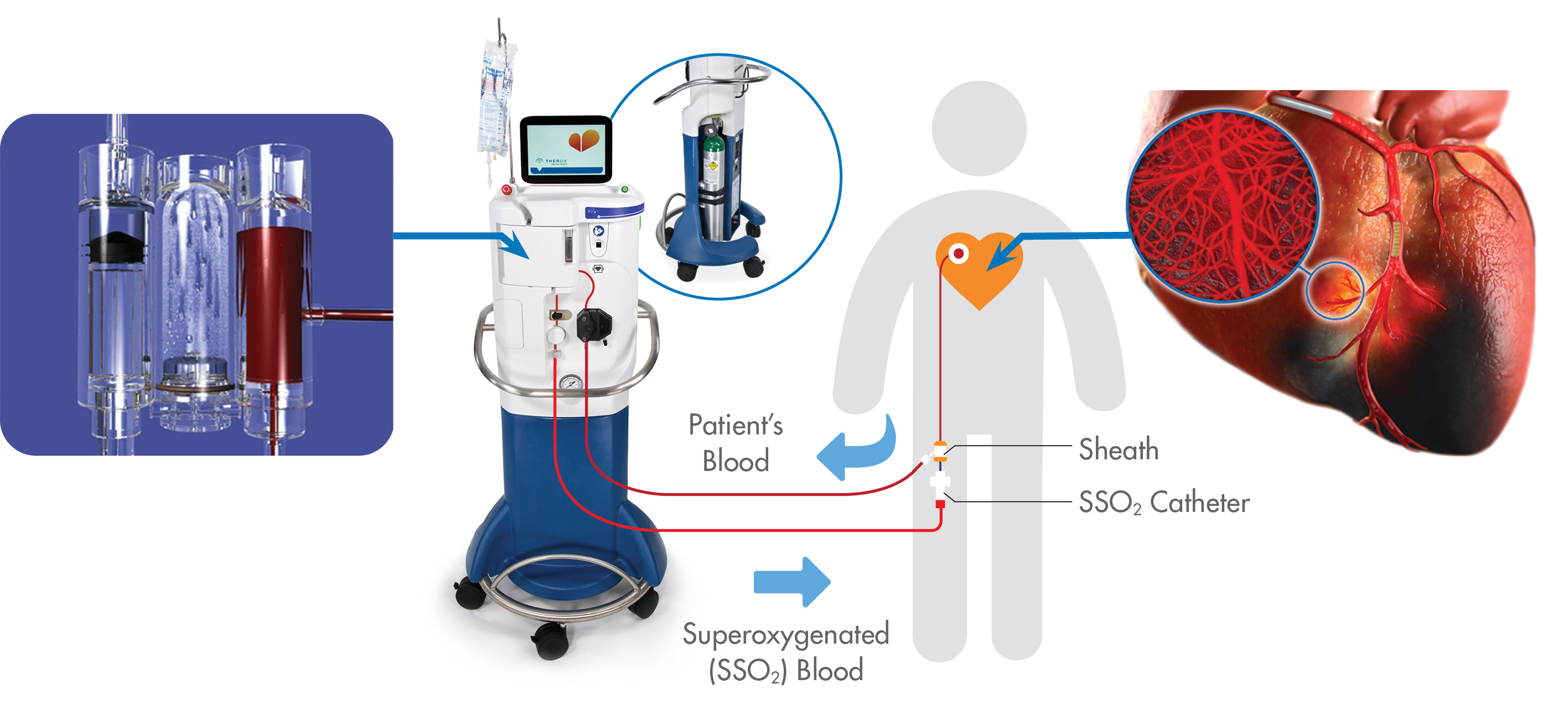
SSO2 Therapy Procedure

SSO2 Therapy is a localized hyperoxemic oxygen infusion for the coronary arteries following a heart attack. SSO2 Therapy is a one-time 60-min infusion of superoxygenated blood delivered via a catheter to the left main coronary artery in the cardiac catheterization laboratory following angioplasty and stenting. The superoxygenated infusion is delivered with an elevated pO2 content 7-10 times higher than normal arterial blood.
SSO2 Therapy Dual Mechanism of Action
SSO2 Therapy provides an infusion of superoxygenated blood with a pO2 level ~ 1000 mmHg. This elevated oxygen concentration enables a high rate of oxygen diffusion into ischemic tissue. At a pO2 level 7-10x normal, SSO2 delivers high concentrations of dissolved oxygen, at hyperoxemic levels, focally to the area of myocardial damage. This diffusive transfer of O2 to areas most in need does not depend on blood flow, and thus SSO2 can easily access the endothelial cells of capillaries suffering from edema (swelling). SSO2 is able to reverse this edema response in the microvasculature and restore flow, nurturing surrounding heart tissue with oxygenated blood.
1 O’Neill WW, et al. Jour of Am Coll Cardiol. 2007;50; No.5. 397-405.
2 Stone, et al. Circ Cardiovasc Interv. 2009 Oct; 2:366-375.
Caution: Federal (United States) law restricts this device to sale by or on the order of a physician. The TherOx SSO2 System is indicated for the preparation and delivery of SuperSaturated Oxygen Therapy (SSO2 Therapy) to targeted ischemic regions perfused by the patient’s left anterior descending coronary artery immediately following revascularization by means of percutaneous coronary intervention (PCI) with stenting that has been completed within 6 hours after the onset of anterior acute myocardial infarction (AMI) symptoms caused by a left anterior descending artery infarct lesion.
Indications For Use: The TherOx DownStream System is indicated for the preparation and delivery of SuperSaturated Oxygen Therapy (SSO2 Therapy) to targeted ischemic regions perfused by the patient’s left anterior descending coronary artery immediately following revascularization by means of percutaneous coronary intervention (PCI) with stenting that has been completed within 6 hours after the onset of anterior acute myocardial infarction (AMI) symptoms caused by a left anterior descending artery infarct lesion.
Find your solution
From state-of-the-art medical devices to innovative software, we’ve designed our solutions to empower you to save more lives. Find out how ZOLL hospital solutions can support your clinical team.
Connect with an expertFind your solution
From state-of-the-art medical devices to innovative software, we’ve designed our solutions to empower you to save more lives. Find out how ZOLL hospital solutions can support your clinical team.
Connect with an expertFind your solution
From state-of-the-art medical devices to innovative software, we’ve designed our solutions to empower you to save more lives. Find out how ZOLL hospital solutions can support your clinical team.
Connect with an expert